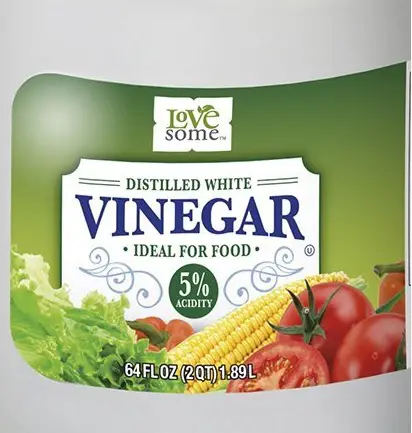There are many sets of common chemicals used in daily life on a routine basis.
A chemical is a substance that consists of a specific set of molecules or ions in it.
In nature, we find many substances or materials which are mixtures of a different sets of molecules.
However, they can be isolated and extracted into different chemicals.
Of them, we use a few chemicals in regular life on an almost daily basis which are listed below.
List of Common Chemicals Used in Daily Life
1. Table Salt (Sodium chloride)
The table salt we use daily as part of the diet is a pure sodium chloride sample. It has a formula of NaCl, i.e., an atom of sodium and chlorine are bound to each other.
Chemically it is neutral, and when added to water, the pH is 7. So it causes no harm as such within suitable quantities consumed.
The molecule is made of an ionic bond and, when dissolved in water, dissociates into Na+ and Cl– ions.
2. Citric acid
It is obtained from lemon, which is used as a vegetable to impart taste to food and also to make fruit juices.
It is a weak acid with a pH below 7, and in case of gastric acidity, it can be used along with sodium bicarbonate to relieve the gas from the stomach.
It is also a preservative due to its acid properties.

3. Acetic acid (Vinegar)
This is usually part of the vinegar we use in the kitchen.
It can also be used to remove specific stains from clothes while washing. This is an organic compound and is acidic.

4. Sugar (Sucrose)
Sugar is a routinely used sweetening agent for tea, coffee, sweets, etc.
It is obtained from sugar cane juice. It has pure sucrose molecules, which are a combination of fructose and glucose.
It is a disaccharide, and when consumed, it is broken down by the digestive enzyme amylase into glucose and fructose.
5. Glucose
Glucose is a monosaccharide that is obtained from starch. It is one of the monomers of carbohydrates, having six carbons in its chemical structure.
When consumed, it gives instant chemical energy to our body.
Hence, glucose is taken by athletes and fitness enthusiasts on a regular basis to gain extra strength.

Some even mix it with protein shakes before going for exercise or gym.

6. Baking soda
Sodium hydrogen carbonate is a white powdery substance used for baking.
It is widely used in food making process to impart special characteristics as a leavening agent.
Besides, when consumed, it can reduce gastric acidity due to its alkaline nature. When dissolved in water, it produces a pH above 7 and is around 8.31.
This baking soda, when mixed with lemon juice in a glass of water, produces carbon dioxide gas, which, when consumed, immediately relieves gas from the stomach.
In combination with a tablespoon of sugar, it is a good antacid to relieve stomach pain when drugs are not available.
7. Phenol to clean
Phenols are organic acids used as antiseptics to kill germs in hospitals and other places requiring aseptic conditions.
Though it is organic alcohol, it has acidic pH and can kill germs by destroying their cell membrane and other structures.
However, it is carcinogenic to humans on long-term use. So, it should not be touched with bare hands.
8. Acids like HCl for cleaning bathrooms
Acids like HCl and others are used in dilute forms to clean bathrooms and toilets, remove scars due to hard water (calcium stripes), and also to kill germs.
Acids for running batteries in automobiles
Sulfuric acid is used in automotive lead batteries to store current. Here, sulfuric acid forms lead sulfate in the absence of a current.
When the battery is charged, this process reverses to form lead and concentrated sulfuric acid.
This type of battery is cheaper and more efficient in producing the instant current required for running automobiles.
9. Glycerin
A hydrating and smoothing agent is applied to the skin.
It reduces skin dryness and cracks when applied on a regular basis.
Chemically glycerin is three carbon hydroxy alcoholic compound.
10 Napthene balls
These are insect-repellant balls having the organic compound naphthalene.
This interesting compound converts to gas from solid form directly without going into liquid form.
Hence, you will notice that, once placed, it disappears after a few days from the place.